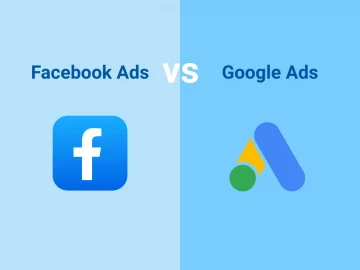In the world of digital marketing, the debate between Facebook Ads vs. Google Ads is ongoing. Both platforms offer powerful tools for businesses to reach new customers and boost sales, but deciding which one to use can be challenging. They cater to different kinds of audiences, serve distinct purposes, and require varying strategies.
For many businesses, choosing the right advertising platform can be the difference between skyrocketing conversions and wasting money on ineffective campaigns. So, which is right for you? In this article, we’ll compare Facebook Ads vs. Google Ads, examining their targeting capabilities, costs, performance metrics, and much more. By the end, you’ll have the insights you need to choose the platform that best aligns with your business goals.
What is Google Ads?
Google Ads is a powerful online advertising platform that allows businesses to display their ads on Google’s search results, YouTube, and across the Google Display Network. Operating on a pay-per-click (PPC) model, businesses bid on specific keywords, and only pay when users click their ads. This system enables advertisers to target users who are actively searching for products or services, making it ideal for capturing high-intent customers.
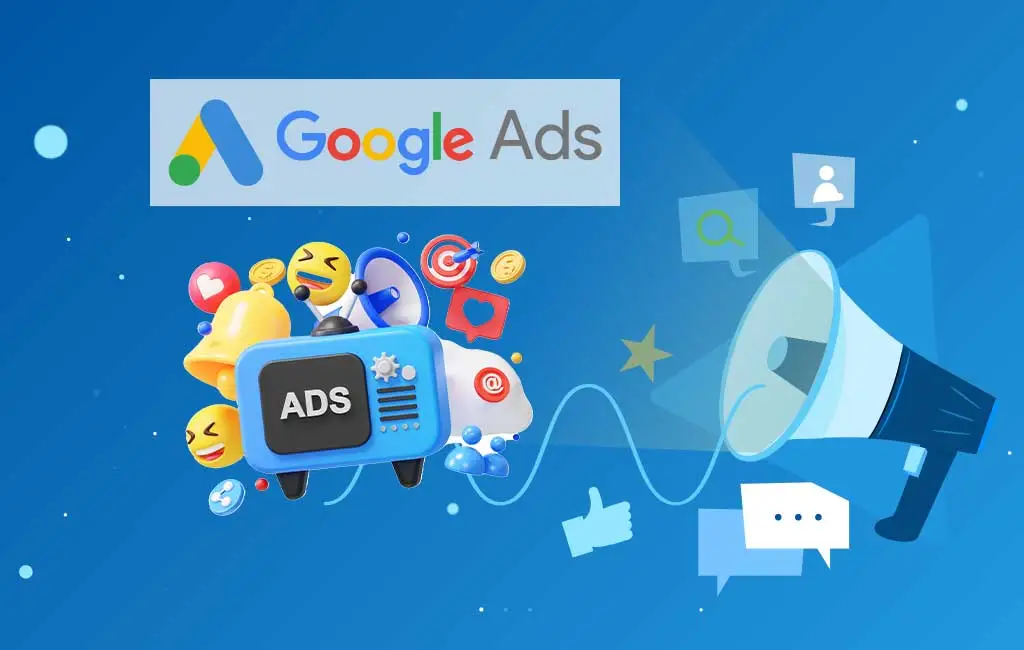
Google Ads offers several formats, including text-based search ads, display ads, video ads, and shopping ads, giving businesses multiple ways to reach potential customers. Whether through search results or display banners on partnered websites, Google Ads focuses on delivering ads to users based on their search intent. With billions of daily searches, it provides a robust way for companies to connect with targeted audiences and convert search traffic into sales or leads.
Google Ads Basics
Google Ads, once known as Google AdWords, is one of the most widely used digital advertising platforms in the world. It allows businesses to create ads that appear across Google’s massive network, including search results, YouTube videos, and third-party websites that are part of the Google Display Network. The key characteristic that sets Google Ads apart is that it’s heavily focused on intent-based advertising.
Google Ads operates on a pay-per-click (PPC) model, where advertisers bid on keywords related to their business. When someone searches for those keywords, Google determines which ads to show based on a combination of factors like bid amount, relevance, and quality score.
Here are the Main types of ADs Offered by Google:
Search Ads: These are the text-based ads that appear at the top of Google search results when users search for specific terms. They are the most popular ad type on the platform and are especially effective for businesses looking to convert high-intent searchers into customers.
Display Ads: These are banner or image-based ads that appear on Google’s partner websites. They’re ideal for creating brand awareness and reaching users who might not be actively searching for your product but fit your target audience’s profile.
YouTube Ads: Video ads that are shown on YouTube before, during, or after a video. Given the massive audience YouTube has, these ads can be very effective for businesses with engaging video content.
Shopping Ads: These show product images, prices, and descriptions directly in search results. They are highly effective for eCommerce businesses because they provide potential customers with detailed product information at first glance.
Remarketing Ads: Google’s remarketing ads allow you to target users who have already visited your website but didn’t convert. These ads follow users across the internet and can remind them of your product or service.
Google Ads is all about capitalizing on user intent. If a person is actively searching for a solution, Google Ads puts your business directly in front of them. This makes it a powerful platform for businesses in industries where search demand is high, like home services, legal services, and eCommerce.
What are Facebook Ads
While Google Ads is about capturing search intent, Facebook Ads take a different approach. They focus on social engagement and audience targeting.
Facebook Ads Overview
Facebook Ads allow advertisers to create targeted campaigns that appear across Facebook, Instagram, Messenger, and Audience Network (a collection of third-party apps). What makes Facebook Ads unique is the platform’s detailed audience targeting options, which are based on users’ demographics, interests, behaviors, and life events.

Instead of targeting users based on the keywords they search for, Facebook Ads reach users based on their lifestyle, preferences, and engagement patterns. This makes the platform ideal for businesses looking to create brand awareness or engage with a particular demographic
Key Types of Facebook Ads Include:
Image and Video Ads: These are the most common types of ads that appear in users’ Facebook and Instagram feeds. Image ads are simple visuals with a call-to-action, while video ads provide a more dynamic way to engage users.
Carousel Ads: Allow you to showcase multiple products or features within a single ad, with each image or video having its own unique link.
Lead Ads: These are specifically designed to collect user information, such as email addresses, without the need for users to leave the Facebook platform.
Dynamic Ads: Perfect for retargeting campaigns, dynamic ads automatically show users products they’ve expressed interest in by visiting your website or app.
Messenger Ads: These ads allow users to start a conversation with your business directly through Facebook Messenger, making them a valuable tool for customer support or personalized shopping experiences.
While Facebook Ads may not target users actively searching for a product or service like Google Ads, they excel at generating brand awareness, building relationships, and targeting specific user behaviors and interests.
Facebook Ads vs. Google Ads: Which One is Best for You?
When comparing Facebook Ads vs. Google Ads, the decision largely depends on your business goals, industry, and audience. Let’s break it down into actionable steps to help you make an informed decision.
Step 1: Define Your Objectives
Your advertising goals will heavily influence which platform to choose.
Google Ads is ideal if you’re looking for direct, high-intent conversions. Since users are actively searching for specific terms, they’re often further down the sales funnel. If your goal is to drive immediate sales, leads, or inquiries, Google Ads can be highly effective.
Facebook Ads, on the other hand, are excellent for brand awareness, engagement, and top-of-funnel activities. If you’re launching a new product, trying to grow your social media following, or need to generate interest around your brand, Facebook Ads are better suited to these objectives.
Step 2: Assess Your Industry and Audience
Certain industries naturally lend themselves more to one platform over the other.
Service-Based Businesses: If you run a service-based business (e.g., plumbing, law, or health care), Google Ads can be more effective as potential customers are likely searching for these services directly.
eCommerce and B2C: For online stores or businesses selling products directly to consumers, Facebook Ads can be very powerful. Its visual nature and sophisticated targeting options allow businesses to showcase products and drive immediate traffic to their online stores.

Step 3: Consider Your Budget
Both platforms offer flexibility in terms of budgeting, but there are differences in costs.
Google Ads tends to be more expensive, especially in industries where competition for keywords is fierce. Keywords like “insurance” or “lawyer” can cost upwards of $50 per click.
Facebook Ads generally have a lower cost-per-click (CPC), making it more affordable for businesses with smaller budgets. However, depending on your targeting options and objectives, Facebook Ads costs can rise.
Step 4: Analyze Audience Engagement
Are you looking to capture users with specific buying intent, or are you looking to create demand where none currently exists?
Google Ads is perfect for capturing high-intent customers who are actively searching for what you offer.
Facebook Ads excel at creating demand and driving engagement from users who may not even know they need your product or service yet. This platform can help nurture leads over time, eventually leading to conversions.
Step 5: Examine Your Sales Funnel
If your business operates with a clearly defined sales funnel, you might want to use both platforms at different stages. For instance:
Use Google Ads to capture bottom-funnel leads who are ready to buy now.
Use Facebook Ads for top-of-funnel activities, like building brand awareness and educating potential customers about your offerings.
Targeted Advertising Capabilities Comparison
When comparing the targeting capabilities of Facebook Ads vs. Google Ads, the platforms offer different strengths that cater to different marketing strategies.
Ad Targeting Comparison
Google Ads Targeting
Focuses heavily on keywords and search queries, meaning it reaches users who are actively searching for solutions.
Google also offers geo-targeting, device targeting, and the ability to set keyword match types (broad match, phrase match, and exact match).
Google’s remarketing tools allow advertisers to follow users across the web after they’ve shown interest in a product.
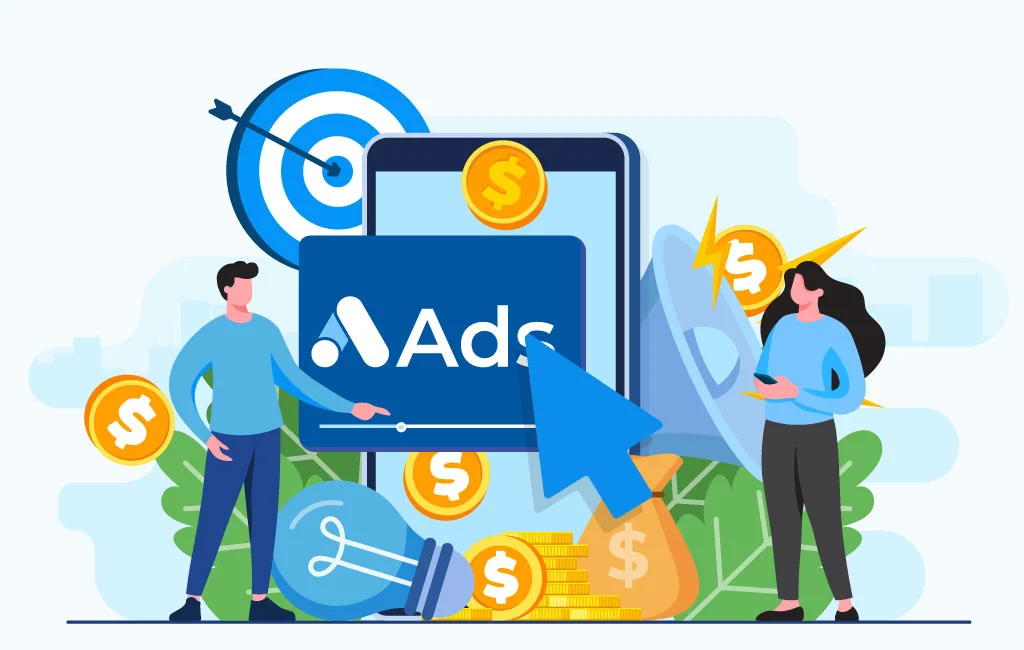
Facebook Ads Targeting
Demographic Targeting: Facebook allows advertisers to pinpoint users based on their age, gender, location, education, and even life events (such as birthdays or new jobs).
Interest Targeting: You can target users based on their likes, hobbies, and interests. For example, if your product appeals to fitness enthusiasts, Facebook can show ads specifically to people who have liked fitness-related pages.
Behavioral Targeting: Facebook tracks user behavior both on and off the platform, allowing advertisers to reach users who have engaged in certain online actions.
Lookalike Audiences: Facebook’s ability to create Lookalike Audiences—audiences that resemble your existing customers—is a powerful tool for expanding your reach.
If you need to capture users based on their search intent, Google Ads provides the precision and control necessary to target specific queries. However, if you want to build relationships with users based on their behavior and lifestyle, Facebook Ads offers far more detailed targeting options.
Cost and Budgeting Comparison
Let’s dive deeper into the cost structure and budgeting for each platform.
Advertising Budget
The cost-per-click (CPC) and cost-per-thousand impressions (CPM) vary significantly between Facebook Ads vs. Google Ads, and it’s essential to understand the dynamics at play.
Google Ads:
- CPC: Due to the intent-driven nature of Google Ads, the cost-per-click tends to be higher, especially for competitive keywords. For example, industries like insurance, law, and finance often have CPCs in the range of $20–$50.
- CPM: Google’s Display Network offers CPM pricing, where you pay for every 1,000 impressions. This is often lower than CPC but may be less effective for direct-response campaigns.
- Budget Flexibility: Google Ads allows you to set daily and monthly budgets, giving advertisers control over how much they’re spending. You can also adjust bids for specific keywords based on performance.
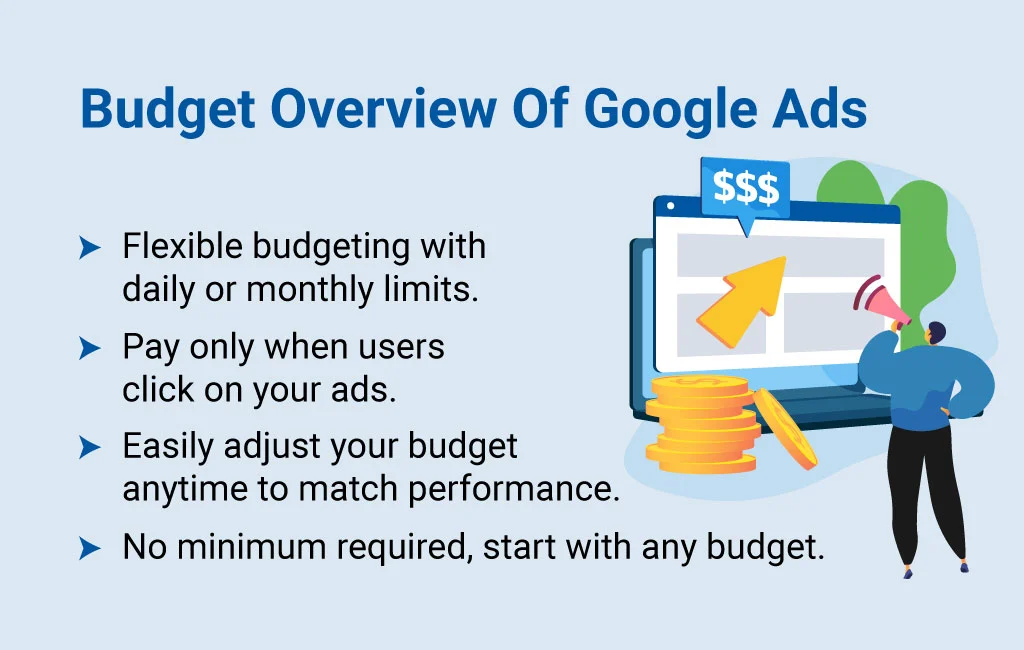
Facebook Ads:
- CPC: Facebook generally offers a lower CPC compared to Google, with average CPCs typically ranging from $0.50 to $2.00, depending on targeting and competition.
- CPM: Similar to Google’s CPM model, Facebook also offers the option to pay per impression, which is often more affordable, especially for brand awareness campaigns.
- Budget Flexibility: Facebook Ads also allows for daily or lifetime budgets, giving you the ability to adjust based on campaign performance.
If you have a smaller budget or are looking to maximize reach, Facebook Ads may offer better value. However, Google Ads can offer a higher return on investment for industries where users are actively searching for solutions.
Performance Metrics and Reporting
Ads Performance Reporting
Both platforms provide robust reporting tools, but the type of data you get varies based on the platform’s strengths.
Google Ads:
Focuses heavily on performance metrics related to search behavior, such as clicks, impressions, keyword performance, and conversion rates.
Google integrates with Google Analytics, allowing businesses to track detailed website activity and user behavior after a click.
Google Ads provides conversion tracking to monitor the effectiveness of campaigns, offering insights into which keywords and ads are driving conversions.
Facebook Ads:
Facebook focuses on engagement metrics, such as likes, shares, comments, and click-through rates.
Through Facebook Ads Manager, advertisers get access to detailed insights on audience demographics, reach, engagement, video views, and more.
Facebook’s pixel allows advertisers to track actions users take on their website after viewing an ad, offering valuable data for retargeting campaigns.
If your goal is to analyze user intent and search behavior, Google Ads offers more detailed insights. However, if engagement and audience interactions are more critical, Facebook Ads provides richer data on social behavior and user interests.

When to Use Google Ads
Using Google Ads
There are specific situations where Google Ads will outperform other platforms. Here are a few scenarios where Google Ads should be your primary tool:
When capturing high-intent users: If your customers are actively searching for specific products or services (e.g., “buy running shoes” or “plumber near me”), Google Ads ensures you capture this demand.
For local businesses: Google Ads’ location-based targeting makes it easy for businesses to reach local customers, whether you’re a restaurant, salon, or auto repair shop.
For products with strong search demand: If your product or service solves a problem that people are searching for regularly, such as legal services or home repair, Google Ads can drive highly targeted traffic.
For remarketing campaigns: Google’s Display Network is excellent for remarketing, allowing you to reconnect with users who have already visited your website but didn’t convert.
Pros and Cons of Using Google Ads
Google Ads Benefits
Here’s a more detailed look at the pros and cons of Google Ads:
Pros:
- Massive Audience: Google’s vast network ensures that your ads can reach a wide array of potential customers.
- User Intent: The ability to target users based on their search queries is invaluable for businesses looking for high-intent leads.
- Diverse Ad Formats: Google offers flexibility in how you present your ads, whether through search, display, shopping, or YouTube ads.
- Detailed Reporting: Google’s robust reporting tools provide insights into keyword performance, user behavior, and conversion rates.
- Remarketing: Google’s powerful remarketing capabilities allow you to re-engage visitors who didn’t convert on your site.
Cons:
- High Cost: Google Ads can be expensive, especially in industries with high keyword competition.
- Steep Learning Curve: Managing Google Ads effectively requires ongoing monitoring, optimization, and a deep understanding of the platform’s features.
- Less Engaging Formats: Compared to Facebook’s dynamic and social ad formats, Google’s ads can feel more transactional and less engaging, especially on the search network.
When to Use Facebook Ads
Facebook Ads Use
There are specific scenarios where Facebook Ads outshine other advertising platforms. Here are some cases where Facebook Ads might be the better choice:
For Brand Awareness: Facebook’s ability to target users based on demographics, interests, and behaviors makes it an excellent platform for businesses looking to increase brand awareness.
When targeting specific demographics: If you know the age, gender, location, and interests of your ideal customer, Facebook’s targeting options allow you to refine your audience with precision.
For visual storytelling: Facebook Ads excel in delivering visual content like videos, images, and carousels, making it ideal for brands that want to showcase their products in a dynamic, engaging way.
For retargeting: Facebook’s Custom Audiences feature allows you to retarget users who have interacted with your website, app, or social media content, offering opportunities to re-engage lost leads.
Advantages and Drawbacks of Facebook Ads
Facebook Ads Limitations
Here’s a deeper dive into the pros and cons of Facebook Ads:
Pros:
- Highly Targeted Advertising: Facebook’s targeting capabilities allow you to reach users based on demographics, interests, and behaviors, giving you a highly defined audience.
- Cost-Effective: With lower CPC and CPM costs compared to Google Ads, Facebook can offer a more affordable option for businesses with smaller budgets.
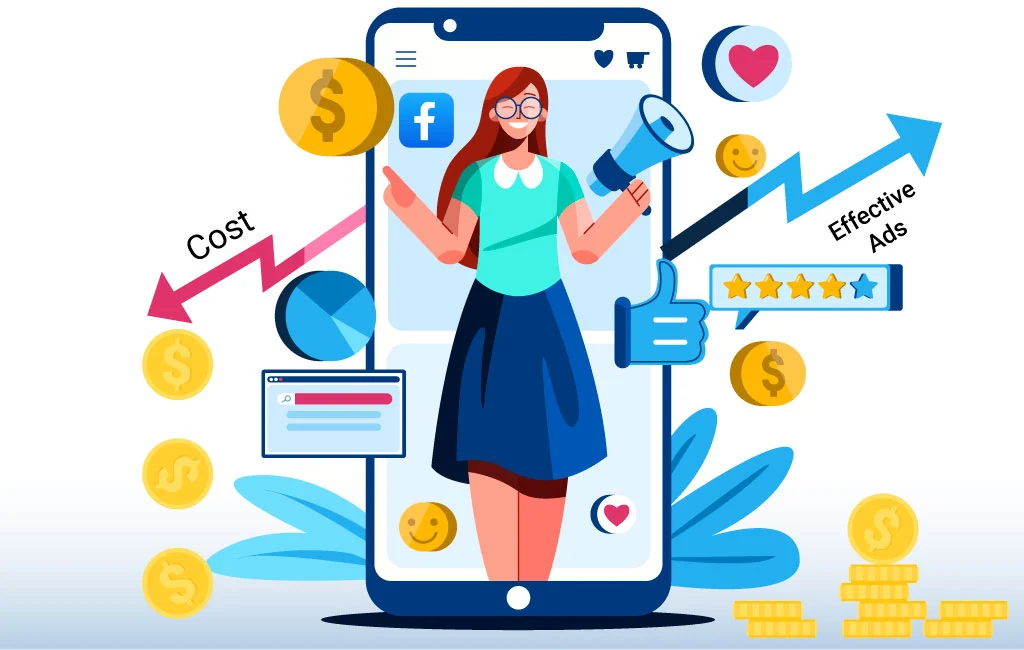
- Dynamic Ad Formats: Facebook’s image, video, and carousel ads are engaging and encourage social interaction, making them great for driving engagement and building relationships with your audience.
- Advanced Retargeting: Facebook’s ability to create Custom Audiences and Lookalike Audiences makes it an excellent platform for retargeting users who have shown interest in your business.
Cons:
- Users Aren’t Searching for Solutions: Unlike Google Ads, Facebook doesn’t capture user intent. Instead, it relies on targeting users based on behaviors and interests, which means users may not be actively looking for your product or service.
- Creative-Heavy: To succeed on Facebook, you need eye-catching, engaging creative assets. If your ads are visually unappealing or lack a compelling message, they may not perform well.
- Engagement-Driven Platform: While Facebook excels in driving engagement, it can sometimes struggle with driving direct conversions, especially in industries where users need to be in a buying mindset.
Best Tips to Consider When Choosing Facebook or Google Ads
Choosing Ads Strategies
To help you make an informed decision between Facebook Ads vs. Google Ads, here are some practical tips:
Start with clear goals: Before you start running ads on either platform, define your objectives. Are you looking to drive traffic to your website, generate leads, or build brand awareness? Knowing your goals will help you choose the right platform.
Test both platforms: If your budget allows, run tests on both Facebook Ads and Google Ads. A/B testing can give you insights into which platform drives better results for your specific business.
Use a multichannel strategy: Don’t limit yourself to one platform. A balanced digital marketing strategy often includes both Google Ads and Facebook Ads. Use Google Ads for bottom-funnel activities and Facebook Ads for top-funnel engagement and awareness.
Focus on the sales funnel: Use Google Ads to capture high-intent customers who are ready to buy, and Facebook Ads to nurture leads and build long-term relationships with your audience.
Optimize regularly: Regardless of which platform you choose, continuous optimization is key. Monitor your campaigns closely, adjust bids, refine targeting, and update creative assets to improve performance over time.
Wrapping Up
The choice between Facebook Ads vs. Google Ads ultimately depends on your business goals, target audience, and budget. Google Ads excels in capturing high-intent leads, making it a go-to platform for businesses that rely on search traffic. Facebook Ads, with its advanced targeting options and visual formats, is perfect for businesses looking to build brand awareness, foster engagement, and nurture leads over time.
Many businesses find success by using both platforms in tandem. By leveraging the unique strengths of each, you can create a more comprehensive digital marketing strategy that drives results across the board.

In the end, the best way to determine which platform works for you is through testing, optimizing, and learning. Both platforms offer powerful tools, but success depends on how well you can tailor your campaigns to your audience and business needs.

